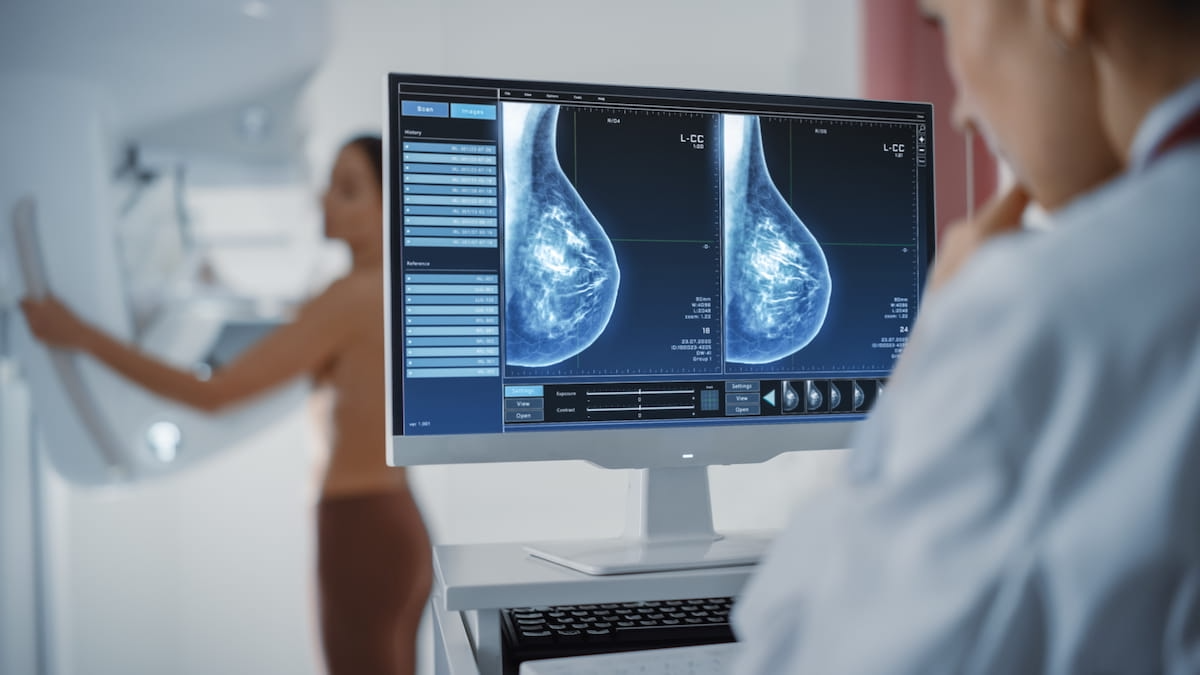In what may be the largest study to evaluate the impact of artificial intelligence (AI) on mammography screening, adjunctive AI had over a 17 percent higher rate of breast cancer detection, a non-inferior recall rate and a higher positive predictive value (PPV) with recalls in comparison to controls.
In the observational multicenter study, recently published in Nature Medicine, researchers in Germany reviewed data from 463,094 women (ranging between 50 to 69 years of age) who had mammography screening with adjunctive AI utilized in 260,739 cases. The 119 reviewing radiologists were allowed to decide when they would incorporate adjunctive AI, according to the study.
For the study, the researchers utilized the Vara MG (Vara) AI system, which facilitates triage of cases with normal findings and offers a safety net feature that alerts radiologists to potential suspicious findings after an initial radiologist assessment of normal findings.
The study authors found that adjunctive AI facilitated a 17.6 percent higher breast cancer detection rate (BCDR) (6.7 per 1,000 vs. 5.7 per 1,000) in comparison to unassisted double mammogram reading.
Noting that adjunctive AI had a non-inferior recall rate to that of unassisted double reading (37.4 per 1,000 vs. 38.3 per 1,000), the researchers found that recalls in the adjunctive AI group had a PPV of 17.9 percent in comparison to 14.9 percent for unassisted double reading. In contrast to the control group, the study authors also pointed out that those who had adjunctive AI had a higher PPV for biopsies (64.5 percent vs. 59.2 percent).
“Radiologists using the AI-supported viewer were only alerted and shown suspicious computer-assisted diagnosis marks after they interpreted examinations deemed suspicious by the AI as normal. This approach limits automation bias and reduces false-positive recall rates while leaving the final recall decision to the radiologists,” wrote lead study author Nora Eisemann, Ph.D., who is affiliated with the Institute for Social Medicine and Epidemiology at the University of Lubeck in Lubeck, Germany, and colleagues.
For women with dense breasts, the study authors found that adjunctive AI offered an 18.7 percent higher BCDR (7.4 per 1,000 vs. 6.2 per 1,000) with a 3.9 percent reduction in recall rate (47.1 per 1,000 vs. 49 per 1,000).
Three Key Takeaways
1. Enhanced breast cancer detection. The use of adjunctive AI in mammography screening led to a 17.6 percent higher breast cancer detection rate (BCDR) compared to unassisted double reading. Researchers also noted an even higher BCDR increase (18.7 percent) in women with dense breasts.
2. Improved diagnostic efficiency. Adjunctive AI showed a higher positive predictive value (PPV) for recalls (17.9 percent vs. 14.9 percent) and biopsies (64.5 percent vs. 59.2 percent), with a comparable recall rate to unassisted double reading.
3. Reduced radiologist workload. Radiologists spent 43 percent less time on normal mammogram reviews when supported by AI, allowing better allocation of time to more complex cases.
In assessing the impact of adjunctive AI on reading time, the researchers noted that mammograms deemed as normal had a median reading time of 16 seconds in contrast to 30 seconds for unclassified mammograms and 99 seconds for mammograms that triggered the AI’s system’s safety net alert.
The study authors emphasized a 43 percent reduction in the time radiologists spent on reviewing normal mammograms.
“ … We observed that radiologists in the AI group spent less time interpreting examinations tagged as normal by AI compared to examinations with no confident predictions and examinations with the safety net, thus enabling the radiologists to allocate their time better,” maintained Eisemann and colleagues.
(Editor’s note: For related content, see “Current and Emerging Insights on AI in Breast Imaging: An Interview with Mark Traill, MD, Part 2,” “Mammography Study Suggests DBT-Based AI May Help Reduce Disparities with Breast Cancer Screening” and “FDA Clears New Features in AI-Powered Mammography Software Suite.”)
Beyond the inherent limitations of an observational study, the authors conceded that the lack of randomization in the research may have increased the risk of bias with possible confounding factors contributing to the use of AI. The study authors also noted a lack of clarity on whether adjunctive AI could reduce the incidence of interval cancers and detection of cancers during subsequent rounds of screening,
